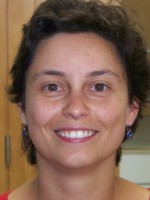abstract
The enantioselective epoxidation of 6-cyano-2,2-dimethylchromene (Chrom) catalysed by the Jacobsen catalyst, using sodium hypochlorite (NaOCl) as oxygen source, at room temperature, was performed in a series of 1,3-dialkylimidazolium and tetra-alkyl-dimethylguanidium based ionic liquids. All the room temperature ionic liquids (RTILs) could be used as reaction media for the enantioselective epoxidation of the alkene giving, generally, moderate to good epoxide yields and enantiomeric excesses (ee%). For the series of ionic liquids derived from the 1,3-dialkylimidazolium cation, it was observed some relationship between the RTILs physical properties and the catalytic reaction parameters, exemplified by linear correlations between (i) the ee% and the alpha Kamlet-Taft parameter (hydrogen bond acidity of the solvent) for CH(2)Cl(2) and [C(4)m(n)im][BF(4)] ionic liquids (n = 1 or 2), and (ii) the ee% and the beta Kamlet-Taft parameter (hydrogen bond basicity of the solvent) for CH(2)Cl(2) and [C(4)mim][X] ionic liquids (X = PF(6), NTf(2) or BF(4)). All the RTILs could be reused in further catalytic cycles, with the exception of [C(8)mim][PF(6)]. The reutilisation of the Jacobsen catalyst for four times generally led to a decrease in the epoxide yield and to a slight decrease in the enantioselectivity. The recycling of the catalyst could be improved by imparting an ionic character to the complex through abstraction of the axially coordinated chloride anion (Cat 2). Other oxygen sources, such as iodosylbenzene, hydrogen peroxide and urea-hydrogen peroxide adduct, were also tested coupled with Jacobsen catalyst, but the best results were achieved with NaOCl. (C) 2010 Elsevier B.V. All rights reserved.
keywords
SOLVENT PROPERTIES; ORGANIC-SYNTHESIS; NEW-GENERATION; OXYGEN SOURCE; COMPLEXES; CONVENIENT; OLEFINS; IMIDAZOLIUM; OXIDATIONS; MODULATION
subject category
Chemistry
authors
Teixeira, J; Silva, AR; Branco, LC; Afonso, CAM; Freire, C
our authors
Groups
acknowledgements
This work was funded by Fundacao para a Ciencia e a Tecnologia (FCT) and FEDER (Portugal), through the Project Ref. PTDC/QUI/70902/2006.


